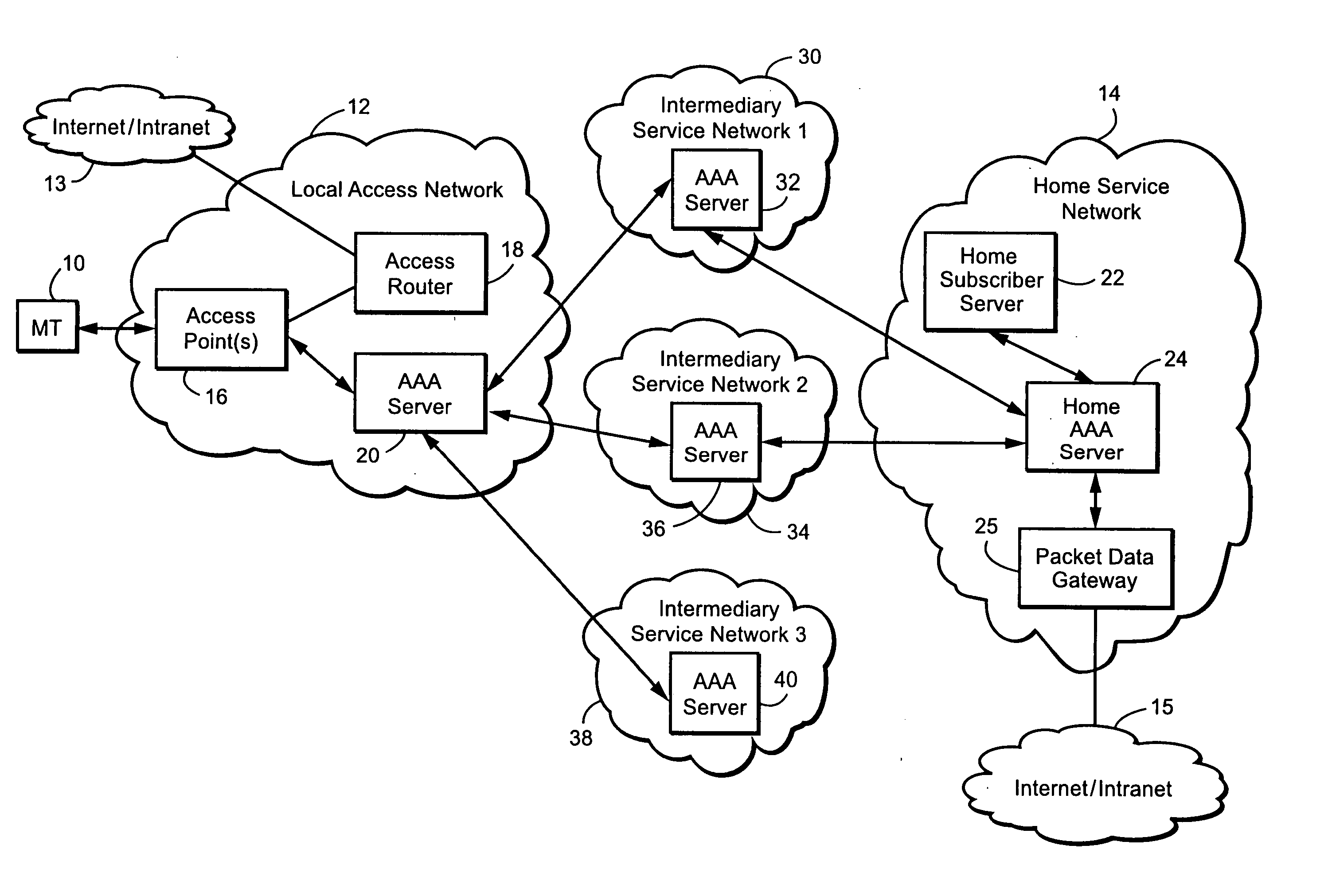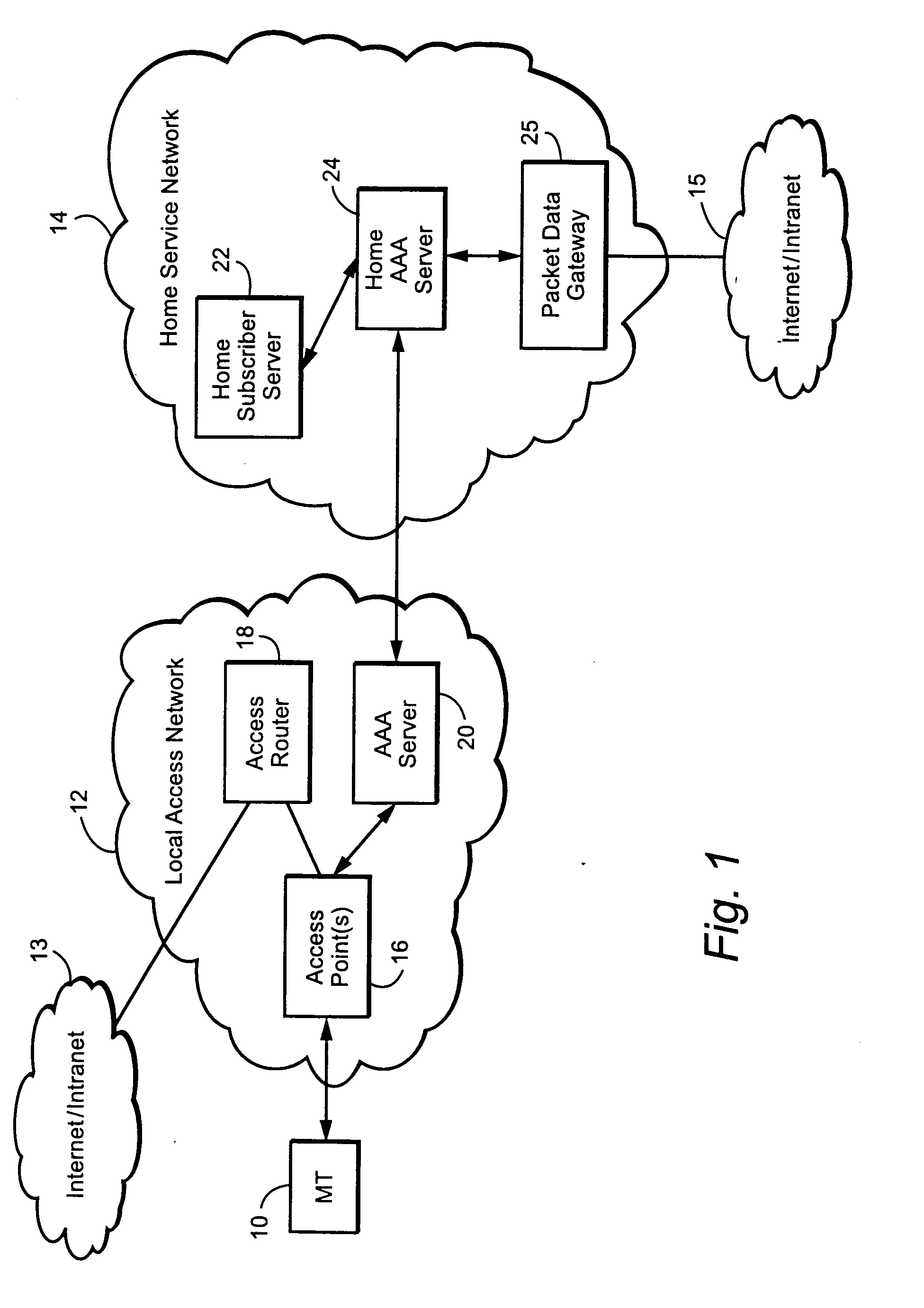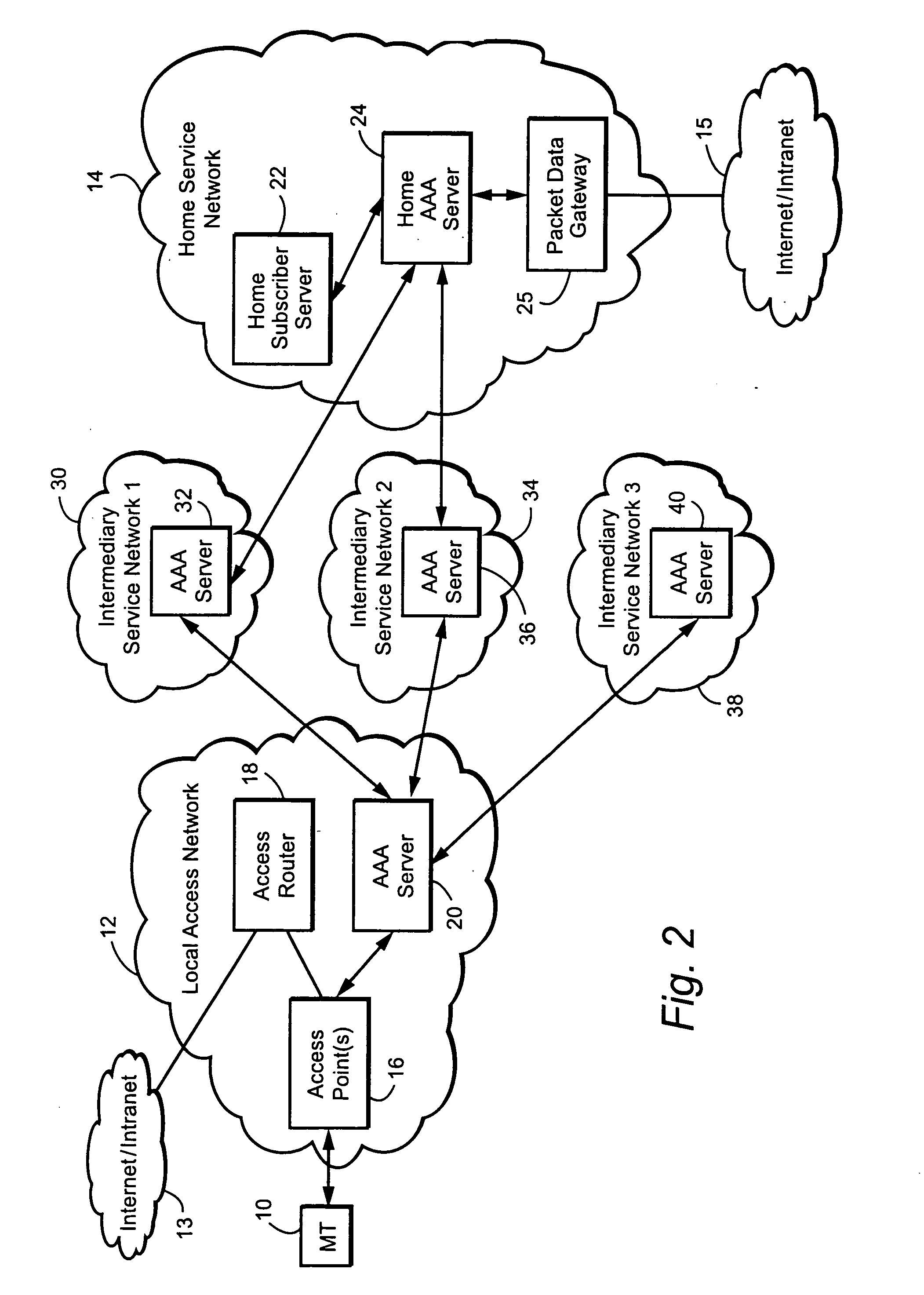Enhancement of AAA routing initiated from a home service network involving intermediary network preferences
a technology of home service network and preference, applied in the field of enhancement of aaa routing initiated from a home service network involving intermediary network, can solve the problems of increasing signaling overhead, substantial scaling problems, and problematic use of virtual ap concept for this purpos
- Summary
- Abstract
- Description
- Claims
- Application Information
AI Technical Summary
Benefits of technology
Problems solved by technology
Method used
Image
Examples
Embodiment Construction
[0040] The following description sets forth specific details, such as particular embodiments, procedures, techniques, etc. for purposes of explanation and not limitation. It will be appreciated by one skilled in the art that other embodiments may be employed apart from these specific details. For example, although the following description is facilitated using non-limiting WLAN / UMTS examples, the present invention may be employed in any local access / PLMN service network. In some instances, detailed descriptions of well-known methods, interfaces, circuits, and signaling are omitted so as not to obscure the description with unnecessary detail. Moreover, individual blocks are shown in the figures. Those skilled in the art will appreciate that the functions of those blocks may be implemented using individual hardware circuits, using software programs and data in conjunction with a suitably programmed digital microprocessor or general purpose computer, using application specific integrat...
PUM
 Login to View More
Login to View More Abstract
Description
Claims
Application Information
 Login to View More
Login to View More - R&D
- Intellectual Property
- Life Sciences
- Materials
- Tech Scout
- Unparalleled Data Quality
- Higher Quality Content
- 60% Fewer Hallucinations
Browse by: Latest US Patents, China's latest patents, Technical Efficacy Thesaurus, Application Domain, Technology Topic, Popular Technical Reports.
© 2025 PatSnap. All rights reserved.Legal|Privacy policy|Modern Slavery Act Transparency Statement|Sitemap|About US| Contact US: help@patsnap.com



